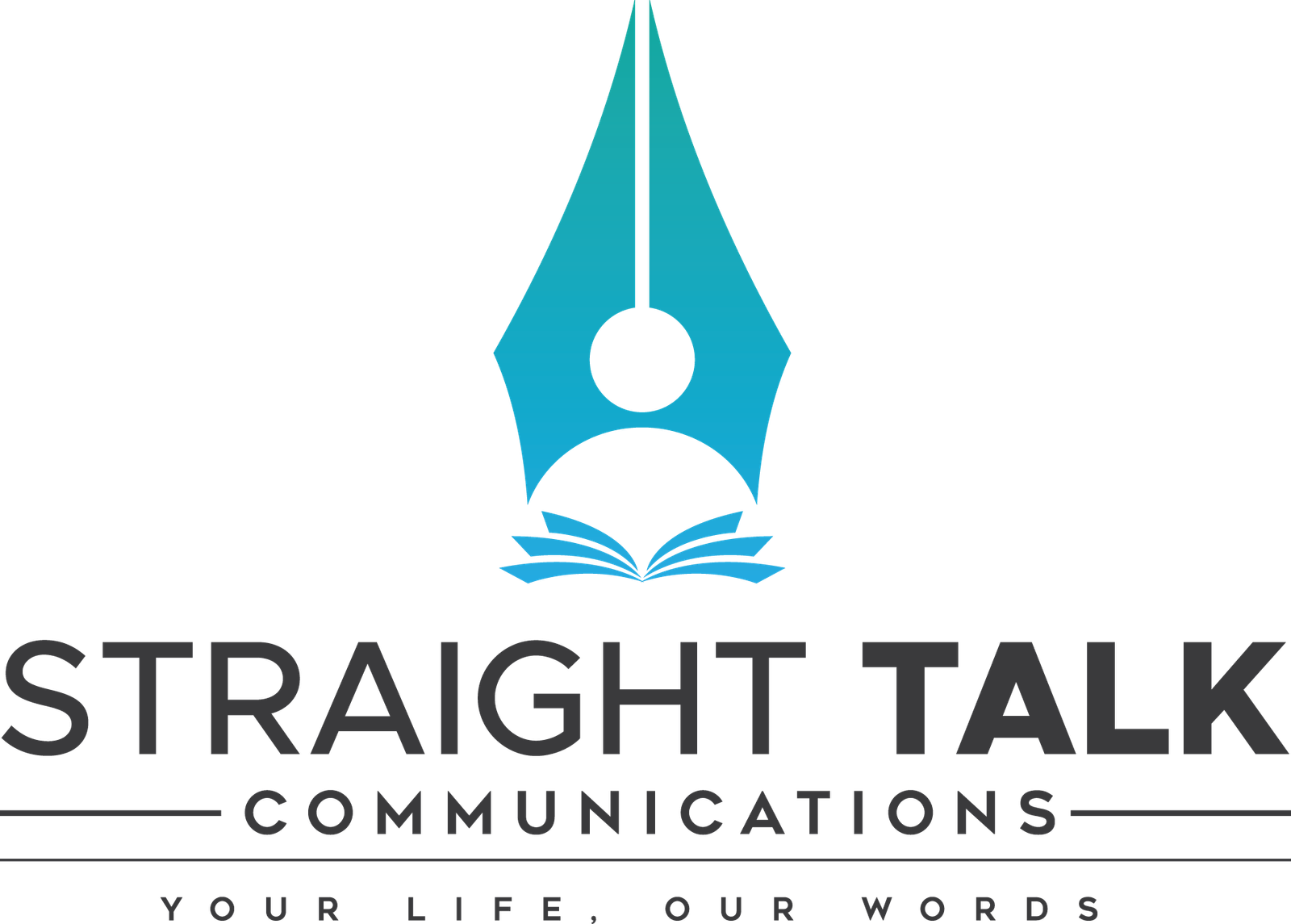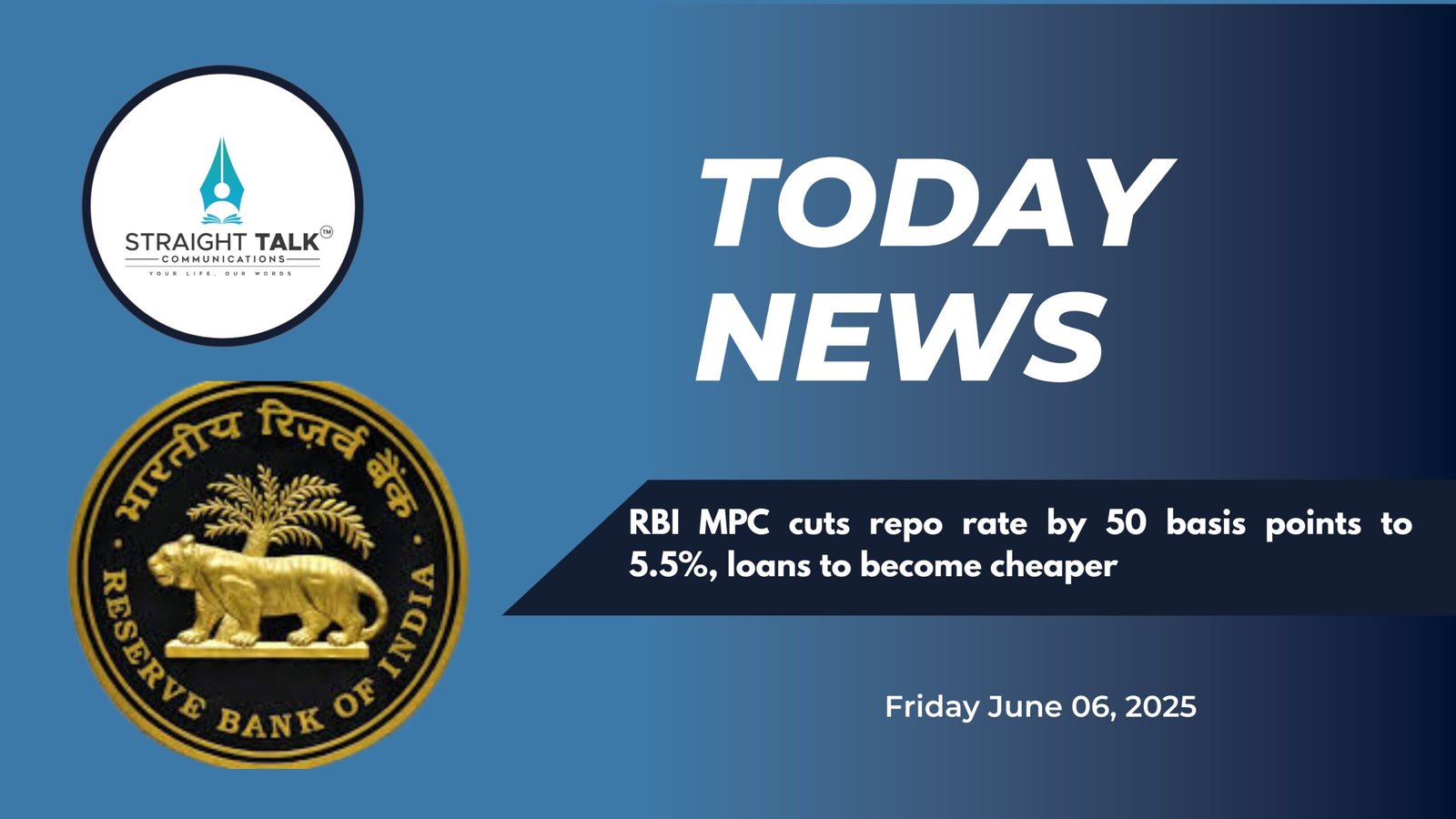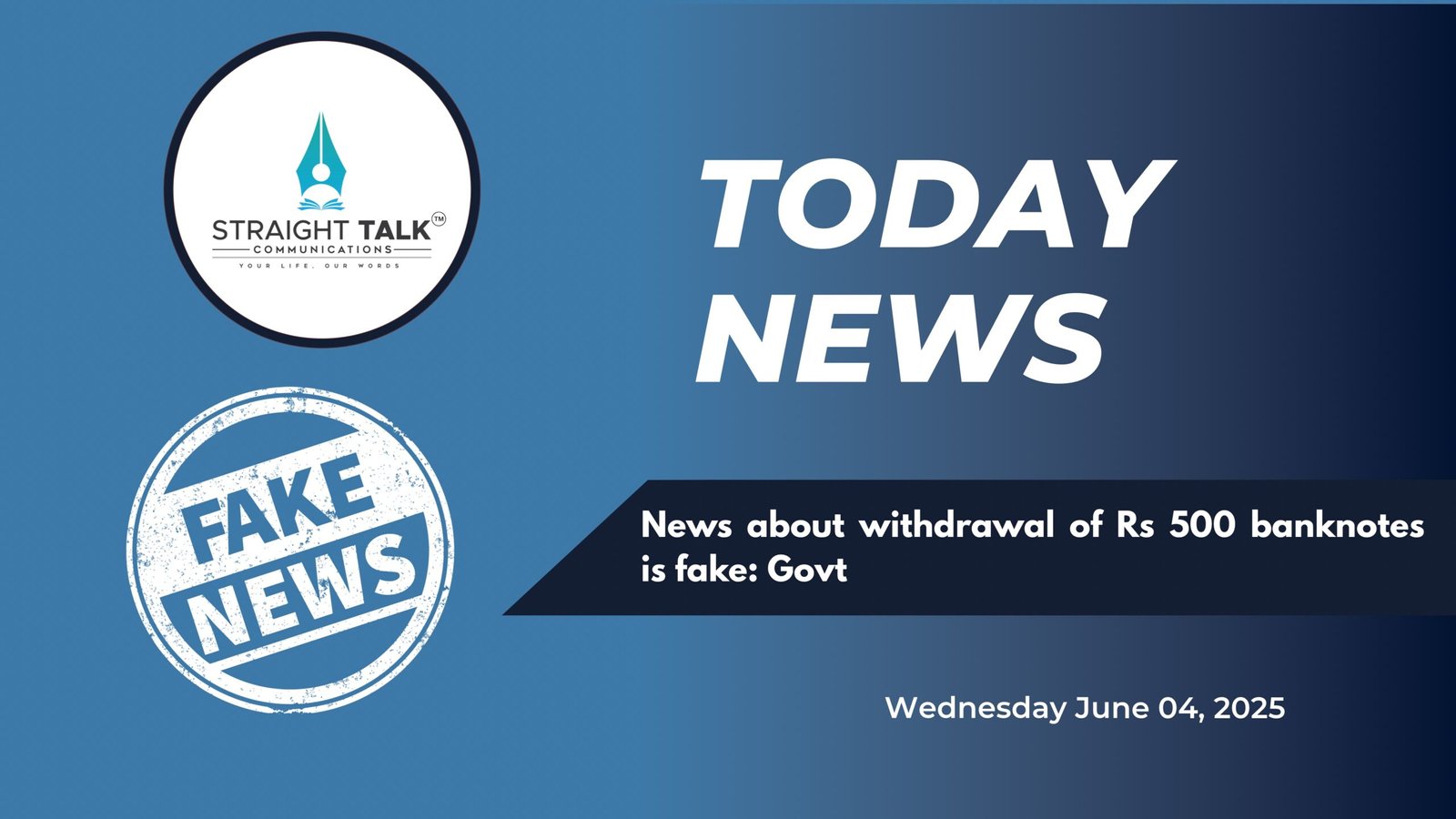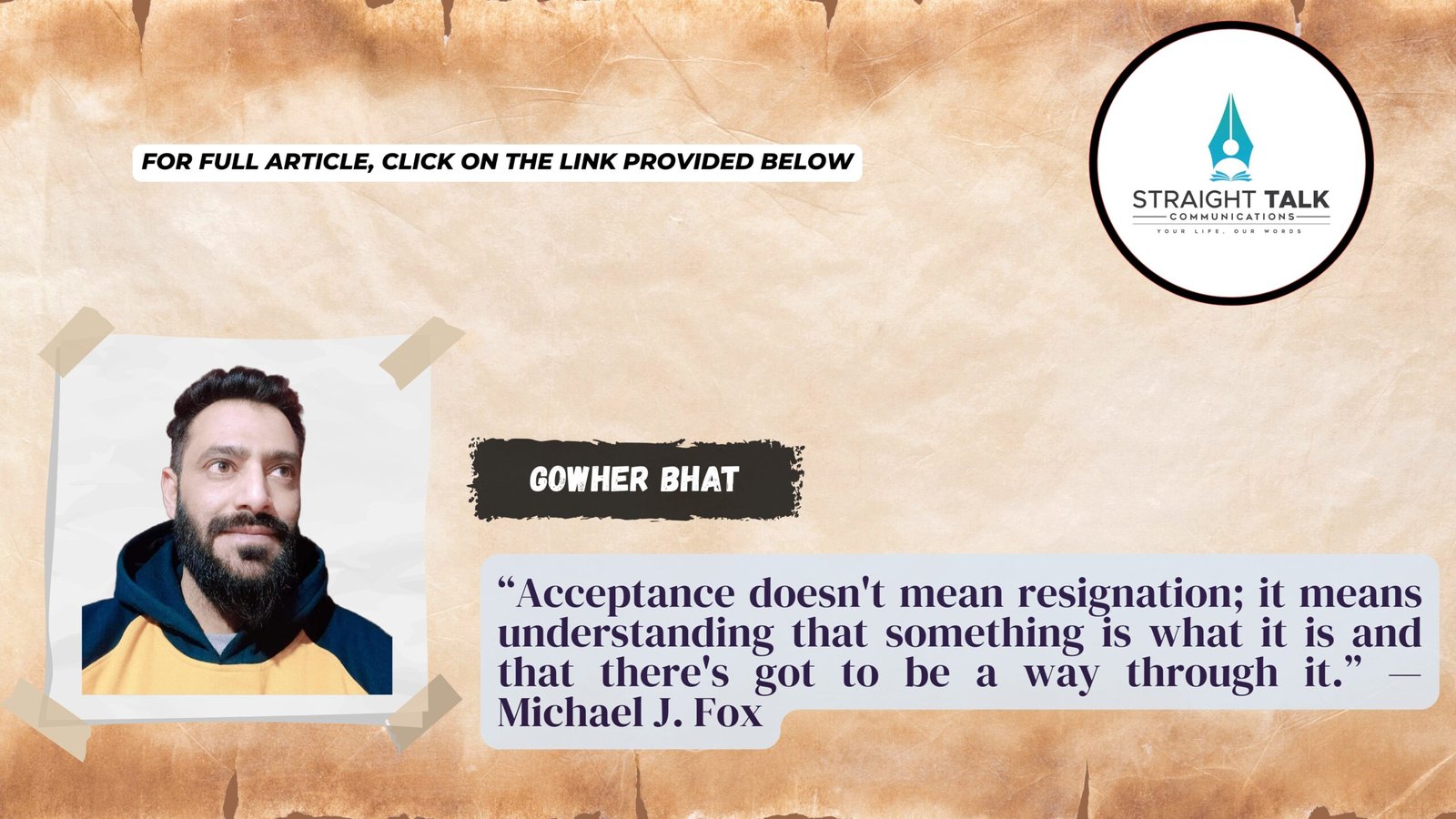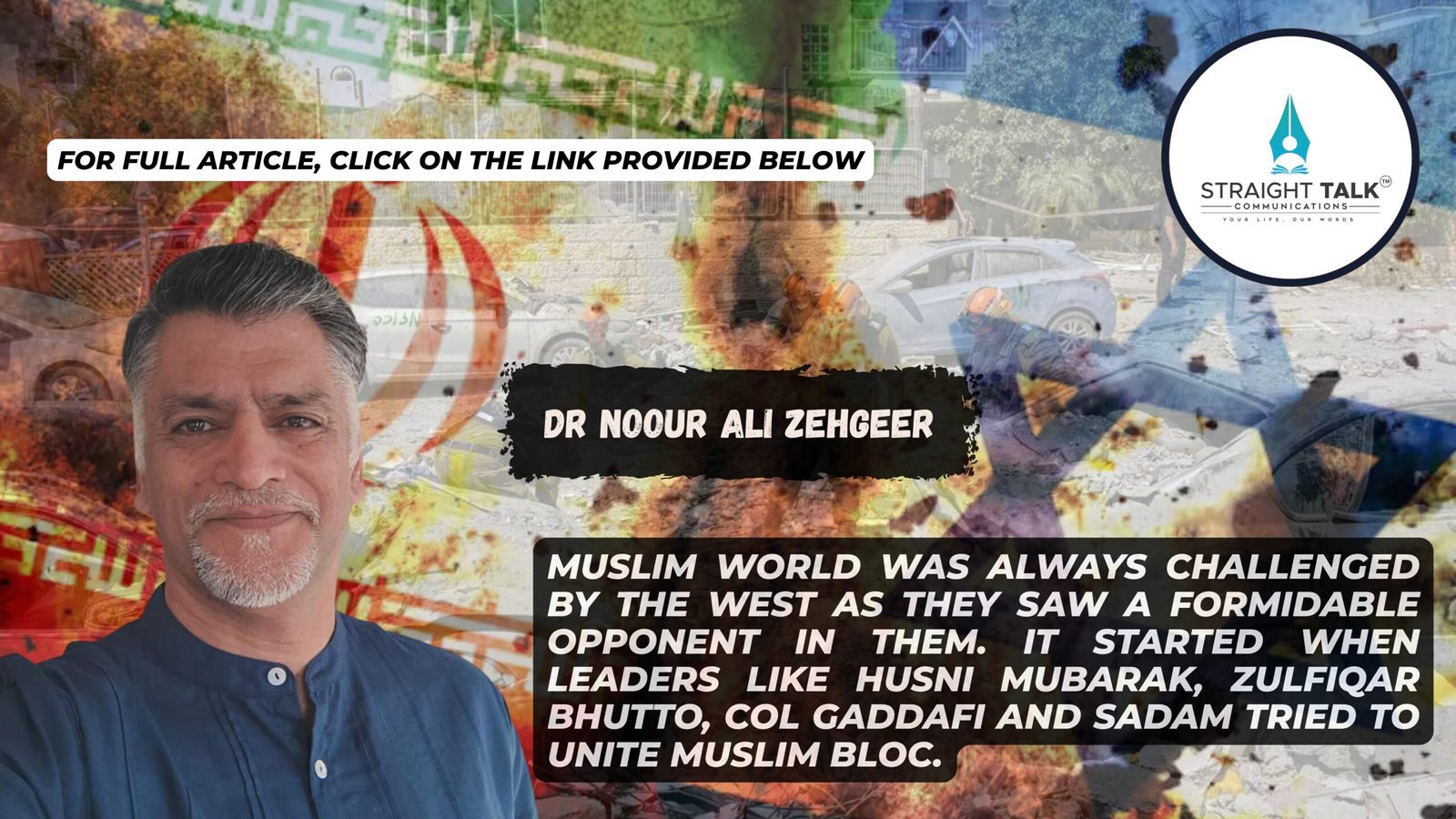Ayatollah Ali Khamenei: The Last Revolutionary in the Eye of Storm
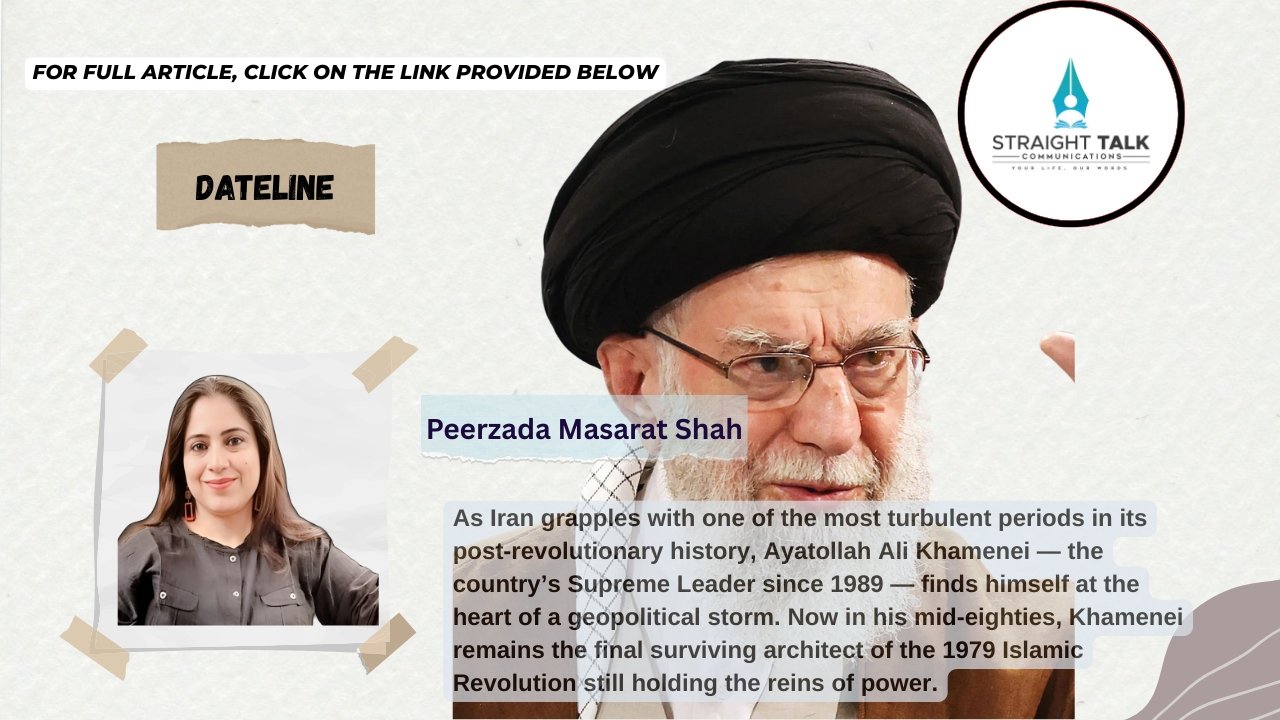
Peerzada Masarat Shah
As Iran grapples with one of the most turbulent periods in its post-revolutionary history, Ayatollah Ali Khamenei — the country’s Supreme Leader since 1989 — finds himself at the heart of a geopolitical storm. Now in his mid-eighties, Khamenei remains the final surviving architect of the 1979 Islamic Revolution still holding the reins of power. But the revolution he helped shape now faces its fiercest test: a direct confrontation with Israel, a rising tide of internal dissent and a visibly waning regional influence.
Amid escalating tensions between Iran and Israel — where both sides have traded military and intelligence blows, from drone strikes to the assassinations of key Iranian figures — Khamenei’s leadership is under increasing scrutiny. The shadow war that once played out in the alleys of Baghdad and the skies over Damascus has grown far more overt and brutal. The Israeli Air Force has repeatedly struck Iranian weapons depots in Syria, sabotaged nuclear sites inside Iran, and targeted senior commanders of the Islamic Revolutionary Guard Corps (IRGC). In retaliation, Iran has launched unprecedented missile and drone attacks, signaling a dangerous new phase of confrontation.
Yet, despite the mounting hostility abroad, deeper cracks are emerging within the Islamic Republic itself. Public discontent, especially among the youth, is more visible than ever. The once-untouchable clerical establishment is being openly challenged by widespread protests and simmering social movements. Economic sanctions have battered the nation, unemployment is rampant, and disillusionment with the ruling elite is growing — a far cry from the promise of “justice and independence” that the revolution once vowed.
In the heart of Tehran, the Ebrat Museum — a former prison turned memorial — stands as a relic of the Shah’s brutal past. On its dimly lit walls hangs the image of a young Seyyed Ali Khamenei, frozen in time. Once a political prisoner tortured under SAVAK, the Shah’s feared intelligence agency, Khamenei’s journey from a prison cell to the Supreme Leader’s chamber is a testament to his resilience. Today, a wax statue of the Ayatollah stands in a preserved cell, symbolizing both his suffering and his defiance.
But history, as it often does, comes full circle. The same prison walls that once bore witness to tyranny now quietly echo the unrest of a new generation. Khamenei, revered by loyalists and reviled by critics, is striving to hold together a fractured vision of the Islamic Republic — a vision forged in the fires of revolution, yet now tested in the crucible of modern geopolitics.
His hardline stance resists both Western pressure and internal reform. Yet the war with Israel is more than a military confrontation — it is a clash of narratives, ideologies, and futures. For Tehran, survival demands resilience; for Khamenei, it demands legacy.
With regional alliances shifting, Arab states normalizing ties with Israel and Iran’s traditional proxies under strain, the strategic influence once wielded by the Islamic Republic is slipping. Hezbollah in Lebanon, the Houthis in Yemen, and various militias in Iraq continue to operate, but Iran’s control over them appears less absolute. Even Russia and China, Iran’s so-called strategic allies, remain measured in their support.
Ayatollah Khamenei’s leadership now stands as a symbol of resistance — but also as a stark reminder of the generational rift between a revolution born in 1979 and a nation increasingly yearning for change. As the drums of war grow louder and diplomacy falters, Iran’s future hangs in delicate balance.
Will Khamenei be remembered as the last revolutionary who weathered the storm — or as the symbol of a fading era?
Only time, and history, will tell.
(The views are of the author and not that of the Straight Talk Communications)
